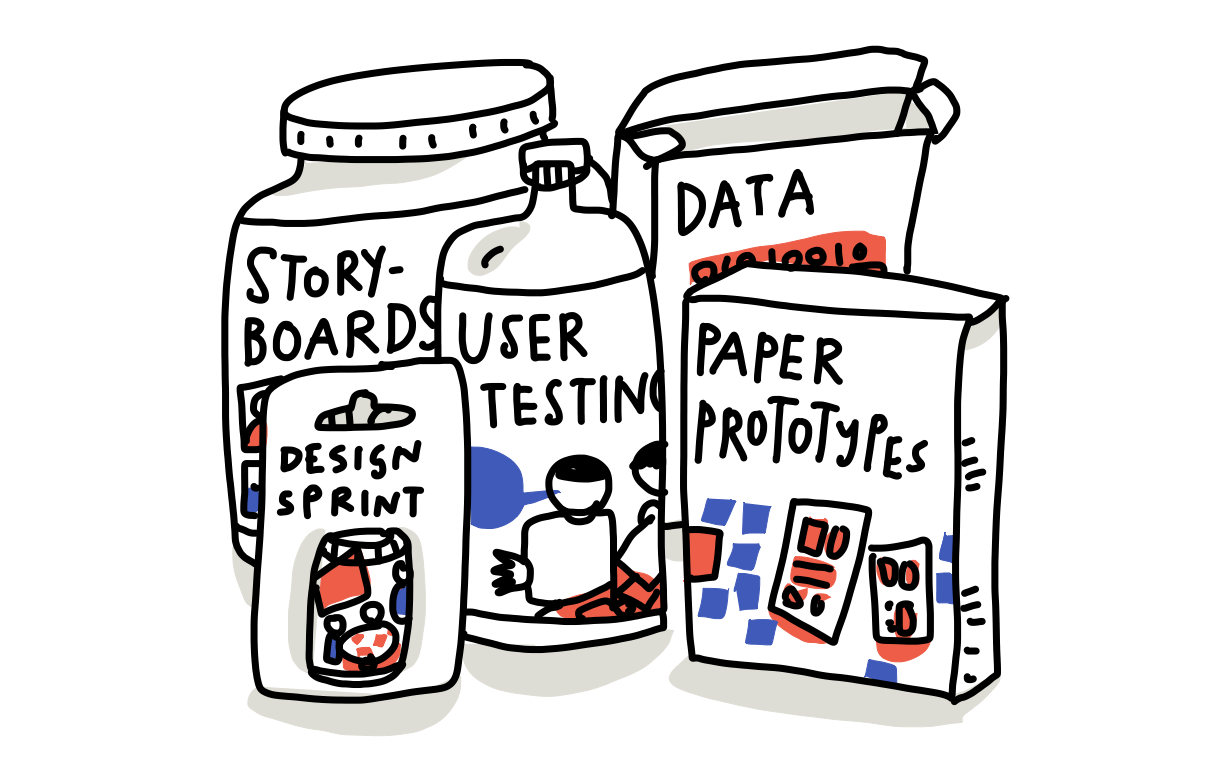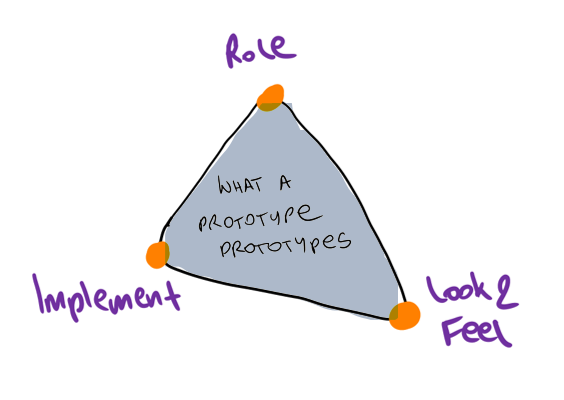 Prototyping for Policy
Prototyping for Policy
Prototyping in Policy: What For?!
Prototyping in Policy — What For?!
If you ask The Economist, design researchers at Stanford, or EU policy-makers the same question — “What’s a recent and potentially impactful case of policy prototyping?” — you’re probably going to hear a similar answer.
They will very likely quote what has become known as the Finnish two-year ‘experiment’. This project was meant to serve unemployed people with unconditional basic income, rather than unemployment benefits. It was designed to evaluate the policy’s outcomes over a ten-year lifespan.
In terms of design, this Finnish experiment could be considered a ‘prototype’ of a policy. Prior to rolling out a new rule, program, or institution fully, a prototype can be a quicker way to understand its value and impacts — even before a more official “pilot”. Typically, in design work, a prototype is a low-resource, more quickly deployed version of the thing, that can be used to run experiments, test the thing, and see whether to invest in it more fully.

Design researchers call prototypes ‘things we make to find out things’ (Stappers, 2013). The goal of prototyping is not to finish, but to learn about the strengths and weaknesses of an idea and to identify new directions (Brown, 2008). Considered a way of making, prototypes are “physical manifestations of ideas or concepts [that] range from rough (giving the overall idea only) to finished (resembling the actual end result)” (Sanders & Stappers, 2014).
Prototypes turn an idea into a form to explore both technical and social feasibility. Whether an idea eventually fails or succeeds, prototyping can help policy-makers, researchers, and others to make the idea more real before investing heavily in it. It helps us sketch, in low-risk and low-resource ways, how a new policy might work. Ideally, it can ‘fail-forward’ or point to better ways to pilot it more robustly. The focus is not on the final outcome (the success or failure), but on the path and its learnings.
This proposed way of gradually approaching an end result in a path-driven manner calls for a change of how the policy cycle suggests how to make policy in the first place. The policy cycle model, as it is generally known (Howlett, Ramesh, & Perl, 2009; Lasswell, 1956), depicts the stages to go through — usually problem definition, agenda-setting, policy formulation, decision-making, implementation, and evaluation — to obtain a final policy.
This traditional model resembles and prompts a highly sequential way of looking at policy. It usually presents a 5 or 6 stage policy cycle (OECD, 2017), that doesn’t contain concurring elements. Most importantly, the policy formulation and evaluation stages are clearly delineated from each other. It also proposes that actors responsible focus on one particular stage only, with limited horizontal collaboration. Those involved in deciding about what the final policy choice will be usually pertain to the policy sphere.
All of those elements have been overhauled long ago in the product design discipline. Designers have created new ways to solve problems, that policymakers can learn from. While it remains debatable whether policy should be treated the same way products or services are, we can speculate about what has hindered a design-inspired prototyping approach to policy so far.
There is one major factor — a very human-rooted one — that renders prototyping in policy difficult. Policy reviews are considered “a failure” in policy organizations (according to my ongoing PhD research since 2016). While failing seems to not generally be as problematic in design or entrepreneurship spheres, the policy sector, and people who work in it are, relatively speaking, highly risk-averse (Meijer, 2014; Osborne & Brown, 2013). An essential question to keep in mind when suggesting prototyping for the making of policy is thus:
How can we encourage ongoing policy reviews, where they are seen as a failure that is culturally not accepted in the first place?
To my understanding, prototyping might not be entirely new to the public sector. In a more traditional form called ‘piloting’ it has been around since the 60s. Still, pilots tend to be relatively established and finite. What would “a pre-pilot prototype” then be? Especially prototypes that are about understanding and learning — not just creating political buy-in and legitimacy for an idea (Jowell, 2003).
For the introduction of the designerly understanding of prototyping to unfold “for real” in policy, two further aspects need be clarified. One addresses costs: What is the political, monetary, and social cost of learning from failure? The second one is about readiness: If revisiting it, how fast can one effectively change and twist the policy? Andrews, Pritchett, and Woolcock (2013) complain that government and organizations pretend to reform by changing what policies or organizations look like rather than what they actually do.
Junginger (2017) emphasizes that policy does not typically provide for ideas or visions that enable translation into action. Such political idiosyncrasies render policy a particular environment for the application of prototyping techniques as we know them. These particularities need to be addressed, with the core questions being: What and when is there to prototype in policy, and how?
As Houde and Hill (1997) explain, prototypes are not ‘self-explanatory’. Selecting the focus of a prototype is the art of identifying key design questions that remain unanswered. They provide a taxonomy of prototypes and thus one way of clarifying what prototypes prototype, categorizing the latter into ‘role’, ‘look and feel’ and ‘implementation’ prototypes.

Suggesting one taxonomy for policy prototypes inspired by their work, and providing one option to the question What do policy prototypes prototype? we could make sense of prototyping for policy as follows:
- Role How does the policy impact the citizen?
- Look & feel How does it feel to the citizen?
- Implementation How does it work?
What remains the most valuable part of prototyping for policy is that it provides a chance to integrate people’s experience of policy while crafting and making it. There is potential to put the service-focus front and center in the making of policy, throughout the stages of the policy-making cycle. In a predominantly output- and outcome-oriented policy-making industry, driven (and mostly failed) by New Public Management ideals, the service or experience character of the product policy was left with little consideration.
Changing and replacing a systemic, deterministic approach with a more granular, humanistic approach is what prototyping can do for policy,especially through the partitioning of complex systems that it proposes (Camburn et al., 2017).
Given that public services can be considered “the means through which policies get enacted and through which policies become real” (Junginger, 2017), if we manage to break down or (re-)compose the policy puzzle as a togetherness of its services for the respective policy end users — also in the case of legal frameworks, protocols, or standards — we might be able to provide an initial version for the making of policy in a prototyping fashion. We can make a first set of prototypes for later policy prototypes. They may succeed or fail as a whole or in part. The cost of not trying it out might be higher than the one of doing so.
References
Andrews, M., Pritchett, L., & Woolcock, M. 2013. Escaping capability traps through problem driven iterative adaptation (PDIA). World Development, 51: 234–244.
Brown, T. 2008. Design Thinking, Harvard Business Review.
Camburn, B. A., Arlitt, R., Perez, K. B., Anderson, D., Choo, P. K., Lim, T., Gilmour, A., & Wood, K. 2017. Design prototyping of systems. ICED 2017.
Greiner, D. J., & Matthews, A. 2016. Randomized control trials in the United States legal profession. Annual Review of Law and Social Science, 12: 295–312.
Houde, S., & Hill, C. 1997. What do prototypes prototype. Handbook of human-computer interaction, 2: 367–381.
Howlett, M., Ramesh, M., & Perl, A. 2009. Studying public policy: Policy cycles and policy subsystems: Oxford University Press Oxford.
Jowell, R. 2003. Trying It Out. The Role of ‘Pilots’ in Policy-Making — Report of a Review of Government Pilots. London, UK: UK Cabinet Office.
Junginger, S. 2017. Transforming Public Services by Design : Re-Orienting Policies, Organizations and Services Around People. Abingdon, Oxon: Routledge.
Lasswell, H. D. 1956. The decision process: Seven categories of functional analysis: Bureau of Governmental Research, College of Business and Public Administration, University of Maryland.
Meijer, A. J. 2014. From Hero-Innovators to Distributed Heroism: An in-depth analysis of the role of individuals in public sector innovation. Public Management Review, 16(2): 199–216.
OECD. 2017. Fostering Public Sector Innovation. Paris, France.
Osborne, S. P., & Brown, L. 2013. Handbook of innovation in public services: Edward Elgar Publishing.
Sanders, E. B.-N., & Stappers, P. J. 2014. Probes, toolkits and prototypes: three approaches to making in codesigning. CoDesign, 10(1): 5–14.
Stappers, P. J. 2013. Prototypes as central vein for knowledge development. Prototype: Design and craft in the 21st century: 85–98.